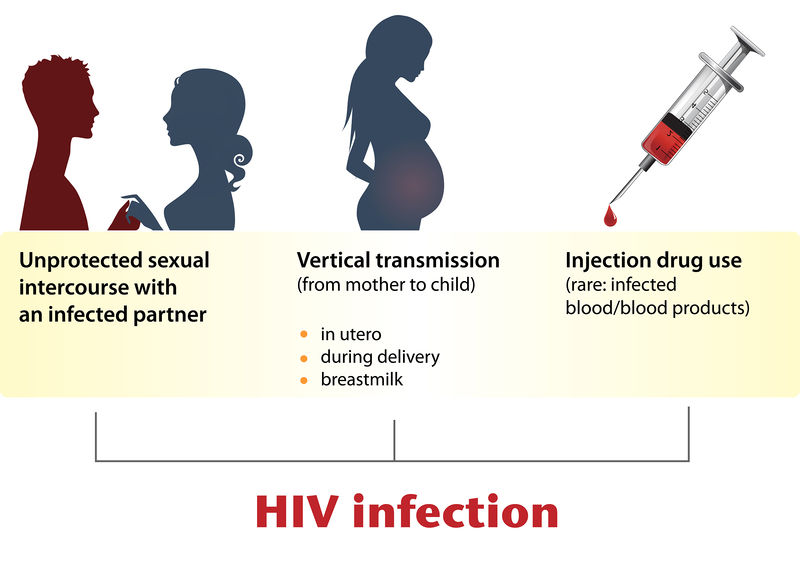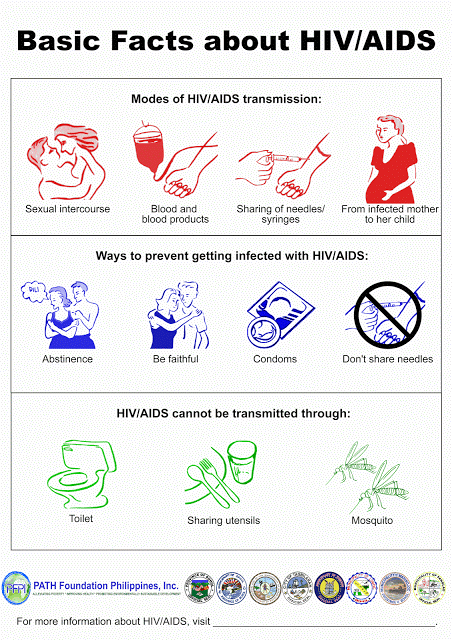Biology
 AIDS (Acquired Immuno Deficiency Syndrome)
AIDS (Acquired Immuno Deficiency Syndrome)
 High risk of getting this infection includes
High risk of getting this infection includes
- Individuals with multiple sexual partners
- Dna Is The Genetic Material Of Viruses
KEY CONCEPTS:Phage infection proved that DNA is the genetic material of viruses. When the DNA and protein components of bacteriophages are labeled with different radioactive isotopes, only the DNA is transmitted to the progeny phages produced by infecting...
- # 56 Summary Of Infectious Diseases And Antibiotics
1 The term disease is defined as a disorder or illness that disrupts the normal functioning of the body or mind. Infectious diseases are caused by organisms known as pathogens that invade the body. Non-infectious diseases are all other diseases that are...
- # 54.2 Infectious Disease - Syllabus 2016
10.1 Infectious diseases 10.2 Antibiotics The infectious diseases studied in this section are caused by pathogens that are transmitted from one human host to another. Some, like Plasmodium that causes malaria, are transmitted...
- Weel Eight: Cell Biology Hiv And Aids
Western Approaches to AIDS I think that the Western approach to AIDS has bought a lot of people a lot of time. The drugs available to treat HIV and AIDS are costly, both financially and to the general health of the patient. But they do seem to be working...
- Immunity And Immune System
IMMUNE SYSTEM It is the system that gives immunity to the body by recognizing, responding and remembering foreign antigens. It plays role in allergic reaction, auto-immune disease and organ transplantation. It includes lymphoid organs, tissues, cells...
Biology
AIDS (Acquired Immuno Deficiency Syndrome)- Transmission, Diagnosis, Prevention
§ Syndrome means a group of symptoms.
§ AIDS is the deficiency of immune system.
§ Caused by HIV (Human Immunodeficiency Virus), a retrovirus having RNA genome.
§ AIDS was first reported in America (1981).
§ AIDS is the deficiency of immune system.
§ Caused by HIV (Human Immunodeficiency Virus), a retrovirus having RNA genome.
§ AIDS was first reported in America (1981).
Transmission
- Sexual contact with infected person.
- Transfusion of contaminated blood & blood products.
- Sharing of infected needles.
- From infected mother to her child through placenta.
- Individuals with multiple sexual partners
- Drug addicts who take drugs intravenously
- Individuals who require repeated blood transfusion
- Children born to an HIV infected mother
HIV does not spread by mere touch or physical contact; it spreads only through body fluids.
There is a time-lag (from a few months to many years i.e. 5-10) between the infection and appearance of symptoms.

HIV infected person may be infected with Mycobacterium, viruses, fungi and even parasites like Toxoplasma.
Diagnosis:
HIV does not spread by mere touch or physical contact; it spreads only through body fluids.
There is a time-lag (from a few months to many years i.e. 5-10) between the infection and appearance of symptoms.
Life cycle of HIV

HIV enters into body ? To macrophages (acts as HIV factory) ? RNA genome replicates in presence of Reverse transcriptase to form viral DNA ? Viral DNA incorporates into host DNA? Infected cells produce virus particles ? HIV enters into helper T-cells (TH) ? Replicates & produce progeny viruses ? Attack other helper T-cells ? T-cells decrease ? Weaken immunity.
 |
| Life cycle of HIV |
Diagnosis:
ELISA test (Enzyme-linked immune-sorbent Assay).
Treatment:
Treatment:
Anti-viral drugs partially effective. They can only prolong the life of the patient.

o Educate peoples about AIDS.
o Making blood (from blood banks) safe from HIV.
o Use of disposable needles and syringes.
o Advocating safe sex and free distribution of condoms.
o Controlling drug abuse.
o Regular check-ups for HIV in susceptible population.
Prevention of AIDS

o Educate peoples about AIDS.
o Making blood (from blood banks) safe from HIV.
o Use of disposable needles and syringes.
o Advocating safe sex and free distribution of condoms.
o Controlling drug abuse.
o Regular check-ups for HIV in susceptible population.
- Dna Is The Genetic Material Of Viruses
KEY CONCEPTS:Phage infection proved that DNA is the genetic material of viruses. When the DNA and protein components of bacteriophages are labeled with different radioactive isotopes, only the DNA is transmitted to the progeny phages produced by infecting...
- # 56 Summary Of Infectious Diseases And Antibiotics
1 The term disease is defined as a disorder or illness that disrupts the normal functioning of the body or mind. Infectious diseases are caused by organisms known as pathogens that invade the body. Non-infectious diseases are all other diseases that are...
- # 54.2 Infectious Disease - Syllabus 2016
10.1 Infectious diseases 10.2 Antibiotics The infectious diseases studied in this section are caused by pathogens that are transmitted from one human host to another. Some, like Plasmodium that causes malaria, are transmitted...
- Weel Eight: Cell Biology Hiv And Aids
Western Approaches to AIDS I think that the Western approach to AIDS has bought a lot of people a lot of time. The drugs available to treat HIV and AIDS are costly, both financially and to the general health of the patient. But they do seem to be working...
- Immunity And Immune System
IMMUNE SYSTEM It is the system that gives immunity to the body by recognizing, responding and remembering foreign antigens. It plays role in allergic reaction, auto-immune disease and organ transplantation. It includes lymphoid organs, tissues, cells...
